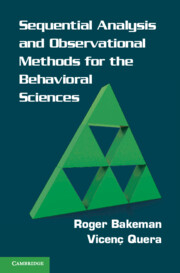As telescopes are for astronomy and microscopes for biology, so coding schemes are for observational methods: They bring the phenomena of interest into focus for systematic observation. However, unlike telescopes and microscopes, which are clearly physical, coding schemes are primarily conceptual. They consist of codes (i.e., names, labels, or categories) that can be applied to whatever behavior is being studied. By naming behavior, coding schemes limit the attention of our observers and state, in effect, that the aspects of behavior identified by the codes are important for our investigation and are the aspects on which we should focus.
Where Do Coding Schemes Come From?
In addition to being conceptual, coding schemes necessarily make theoretical commitments. Implicit in any coding scheme is the understanding that certain behaviors are important and certain distinctions are worth making. Necessarily, coding schemes reflect the investigator’s theory about what is important and why, even when investigators do not make the links between theories and codes explicit. Bakeman and Gottman (1986, 1997) wrote that using someone else’s coding scheme was like wearing someone else’s underwear. They used this attention-grabbing simile to make a point: Codes and underlying theories need to connect. Borrow, or more typically adapt, coding schemes from others only when you share theories, underlying theoretical orientations, and common research goals.
